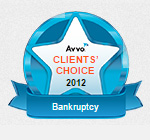
People facing mounting debt and collections often consider the bankruptcy option but what really happens after you file bankruptcy?
You may have read about bankruptcy.
You probably weighed the pros and cons.
Even if you felt uneasy or even shock about the very idea of a personal bankruptcy filing there’s so much to consider.
But what actually happens after you file bankruptcy?
Here are 8 things that take place after people file consumer bankruptcy:
-
Automatic Stay of Bankruptcy
From the moment you file a bankruptcy petition your creditors, those people to whom you owe money must stop all collection activity. With the force of a federal injunction, the automatic stay of bankruptcy orders creditors to stop all collection. The stay falls under Section 362 of the U.S. Bankruptcy Code. Things that must stop include collection notices, lawsuits, foreclosures and other efforts they make to collect.
-
Deadline to Send Materials to Bankruptcy Trustee
30 days after filing of a bankruptcy petition under Chapters 7 and 13 the person filing, called the debtor under the bankruptcy law, must attend a creditors meeting. A bankruptcy trustee is appointed to your case. The rules require the debtor to provide certain materials to the trustee in advance. Seven days before the meeting the debtor must send the Trustee evidence of all income in the 60 days prior to filing as well as the most recently filed federal tax return. Some trustees require additional materials.
-
Bankruptcy Creditors Meeting
Make sure you’ve sent materials the Trustee before the meeting. Take a copy of your petition to the meeting. Although they call it a creditors meeting in reality creditors rarely show unless there are wrinkles in the case. Such wrinkles often include credit card use too close to your filing date. Where debts arise from personal or business relationships, the creditors might show. Common trustee questions you might face appear in another blog article.
-
Bankruptcy Discharge
After the creditors meeting a 60-day waiting period comes into play. During this time period creditors may file objections if there’s anything they consider untoward in your case. Assuming no objections rear their ugly heads, after the 60 days the court issues a discharge in the typical Chapter 7 bankruptcy. This erases your obligation to pay credit cards or other unsecured debt. It does not get rid of most taxes although there are exceptions beyond this article. It does not get rid of standard government backed student loans. Section 727 of the bankruptcy code spells out the details.
-
Credit Report
The fact of your bankruptcy filing stays on your credit report for ten (10) years. This applies to either a Chapter 7 or Chapter 13 bankruptcy. By law credit reporting agencies may keep the bankruptcy on your report for that long. At the same time, they must remove the reference after 10 years. See below on how you can improve your credit rating despite the bankruptcy.
-
Credit Rating
At one time bankruptcy was considered a dead end to your credit. Things change. I’m not telling you a bankruptcy filing has no effect on your credit rating. At the same time shedding all of that debt can be like a dark storm cloud that clears away. What I mean by that is that your credit rating is determined in part by your income to debt ratio. Assuming your income stays the same, the Chapter 7 bankruptcy discharges your debt. The ratio goes up in your favor.
Other factors also come into play. Another blog article spells out what you can do to improve your credit rating after your bankruptcy.
-
Reaffirmation Agreements
Any time you go into a bankruptcy with secured debt you need to think about your options. The most common secured debt held by average people is a car loan or a mortgage. Secured debt means that the car or home are considered “collateral”, or something attached to the loan that allowed you to buy the item. A failure to pay gives the loan company the option of taking the property away in a repossession or foreclosure.
People sometimes say they don’t want to “put the car in” bankruptcy. But, in reality the Chapter 7 bankruptcy discharge discharges the obligation to pay such debts. At the same time, people filing have three options. If you want to keep the house or car you sign a reaffirmation agreement after filing and the reaffirmed debt survives the bankruptcy and you keep the car or house.
Other options exist. Say your car is old and either not running or about to die. You can simply “surrender” the car, which is similar to car repossession, except that the debt goes away in the bankruptcy. Another blog article goes into detail on your other options.
-
60 Day Waiting Period in Chapter 7 Bankruptcy
After the creditors meeting a sixty (60) day waiting period halts your Chapter 7 bankruptcy case. During this time frame the trustee and creditors can look into the facts underlying your case. Should they find anything amiss, such as alleged bankruptcy fraud, credit card use too close to the date you filed or other problems they can file a complaint objecting to the discharge of your debts that you want. The bankruptcy court can extend the sixty day waiting period if a trustee or creditor files a motion during that time period.
These 8 things represent the most important issues cropping up after the average consumer bankruptcy. In some cases people filing might run afoul of bankruptcy law and find objections filed during that 60 day waiting period. If so, a court may deny or limit the extent of the discharge. This can happen if certain misdeeds take place before or during the bankruptcy. Such misdeeds include hiding or destroying assets. Providing false and incomplete information also causes problems.
Your best bet is to retain an experienced bankruptcy attorney in your jurisdiction to guide you through the process.
This article focuses on consumer bankruptcy and not the more complex business filings, usually under Chapter 11 of the U.S. Bankruptcy Code.
The author, attorney Andrew D. Myers represents consumer bankruptcy clients in New Hampshire and Massachusetts and has offices in both states.
Model: Courtney Babel
Sources:
11 United States Code, Sections 341, 362, 521, 727.
Federal Rules of Bankruptcy Procedure, Rule 4004.
Visits: 127




